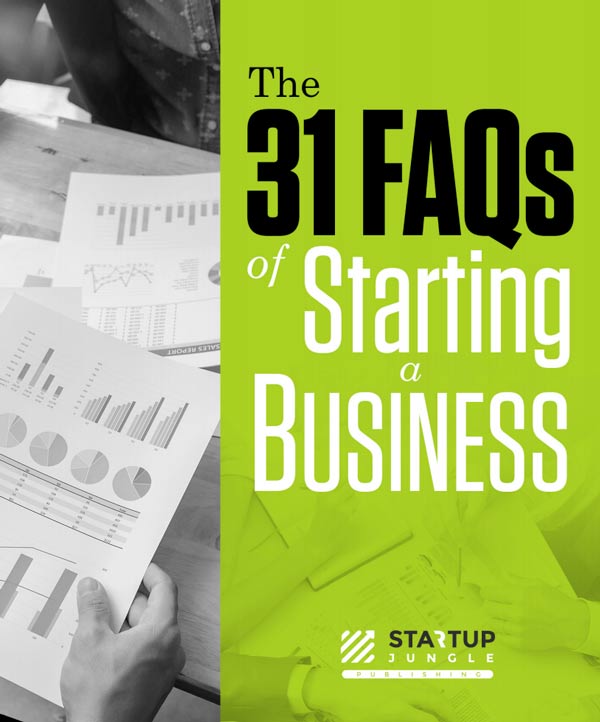In a great post by Mark Suster, an entrepreneur turned VC, he details a 13 step plan to raising funds. The original post can be found here and is over 5,000 words. There is also video summary which is about 70 minutes long.
If you don’t have 70 minutes or the time to read 5,000 words, we have outlined the steps below and a short description. Also included are resources to find out more information within the steps.
He frequently mentions the three major steps to sale which are: Why buy anything? Why buy me? Why buy now?
1. Identify The Right Target Investors
Don’t approach just any VC. Instead find out which VCs are likely to be the best match for your startup based on qualifiers such as geography, typical investment amount correlates with stage, industry, competitor conflicts, and if they have the money currently. Within the VC there will be different partners who have focus on different areas.
2. Determine How To Get Access To Them
It’s easy to reach out to a VC via social media but it isn’t effective. The best way is by introduction either from a portfolio company of that VC or other entrepreneur that they respect.
Resource:
How to Approach or Access a VC
3. Meet Early
He advocates meeting VCs early and to ‘always be raising’.
Fundraising can be time consuming if you jam it into a 6 week period every 18 months. Instead spend some time each week on fundraising related tasks. Just because you are meeting early mean that you should be unprepared.
First impressions are still huge, so plan in advance before the meeting.
4. Press The Flesh
Meet them in person. Tell the VC you’re already planning to be in town so they feel less obligation and are more likely to say yes.
5. Avoid July 15 through Aug 31 and Thanksgiving through New Years
Keep in mind though that sale processes live on momentum. So don’t have one of these periods in the middle of it.
Resource:
VC Funding Season
6. Have A Narrative / Make It Simple
Yes your industry and company is complex. So make it simple. Develop a ‘narrative’ that helps the investors better understand your company. Marketing is story telling after all.
Resource:
The Importance of the Narrative
7. Create a Sustained Campaign
If you were selling a million dollar watch, how long do you think the sales cycle would be? Asking for investment is no different. Get the meeting, baseline the performance, and then show traction to stay on the radar.
Resources:
I met a VC, what happens next?
How do you build long-term relationships with VCs
8. Lobby
Determine who influences the VCs you want to influence. Now figure out how to get them to love you and then ask for their help to show the VC how great you are.
9. Fundraising Is An Ongoing Duty
Always be fundraising. It’s not a six week period, it’s a weekly activity for a founder.
10. Test Interest
Firm answers. Push for a more concrete yes or firm no. A muddy yes will simply waste time. He mentions this is essentially qualifying prospects.
11. Why Buy Me? Or Take Appropriate Risks
His second rule of sales: Why buy me? We are trying to polarize here. The why buy me will have to be extreme differentiation to stand out through strong positioning and being bold. This will turn off some VCs, and make those interested much more obvious.
12. Understand the Importance of Marketing
Simple: we are influenced more than we acknowledge.
‘We tend to be more excited about things that we read in the press and/or articles being forwarded to us by our peers.’
‘Make sure good PR is underpinning your fund raising efforts. The articles about you create great collateral that you can email out in your VC update emails and they create collateral for your contacts to mail to your VC prospects on your behalf. And PR also has a way of generating inbound funding opportunities.’
When an investor Googles you, something newsworthy better show up.
Resources:
1. Understanding PR and Crisis Management
2. How to Work with PR Firms
13. Create Urgency
Third rule of sales: why buy now?
‘The only way to get VCs to move is to make sure subtly that they feel a deal is or may become competitive. You need to create a sense of competition.’
Remember that ‘time is the enemy of all deals’.
Conclusion
Fundraising is hard. Always be fundraising to give yourself a leg up.
Depending where you are at in your fundraising strategy, we recommend looking into the accompanying resources of the section.
How have you successful raised funds in the past? What challenges have you run into when trying to raise funds from VCs? Let us know your own experience in the comments below.



